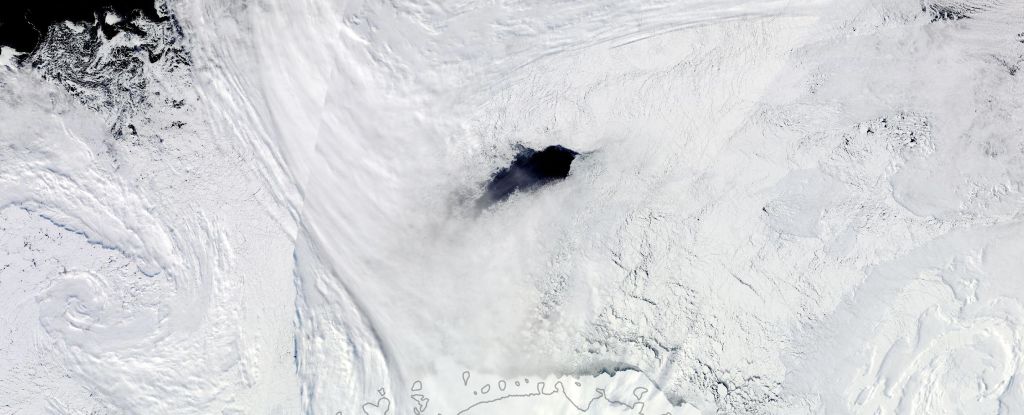Scientists have finally solved the riddle of the recurring giant hole in the Weddell Sea ice in Antarctica, an anomaly first detected in 1974. Known as the Maud Rise polynya, this phenomenon has puzzled researchers for years due to its inconsistent appearance. A new study, published in the journal Science Advances, reveals that wind patterns and salt content play a crucial role in its formation.
The Maud Rise polynya was first observed near a submerged peak called Maud Rise. Unlike normal polynyas, which are usually found near coastlines and serve as breathing spaces for marine mammals, the Maud Rise polynya occurs far from shore and has appeared irregularly over the decades.
Its size was significant when it first appeared in the 1970s, covering an area comparable to that of New Zealand, but then it seemed to disappear from the mid-1970s, only to reappear dramatically in 2016 and 2017, explains Science Alert.
Recent research efforts, intensified by the polynya's resurgence, have involved a range of sophisticated tools, including satellite imagery, autonomous instruments and even seals equipped with sensor hats. The combined data has led to a breakthrough in understanding the forces behind this phenomenon.
Wind-driven surface currents promote the spiraling of deeper waters - and were a missing piece of the puzzle. This resurgence brought warm, salty water to the surface, which significantly influenced the melting patterns of the ice.
However, this alone could not explain the persistence of the open water area. Further analysis revealed that turbulent eddies around the Maud uplift played a crucial role by bringing salt to the surface, thus lowering the freezing point of the surrounding water and preventing the polynya from refreezing.
The research highlights the interaction between ocean currents and wind, demonstrating that the two must align perfectly to create the conditions necessary for a polynya.
These findings are not only crucial for understanding the specific dynamics of Maud's rise, but also for wider climate implications. With predictions of stronger and more frequent Antarctic winds due to climate change, scientists expect these huge areas of open water to become more common.






